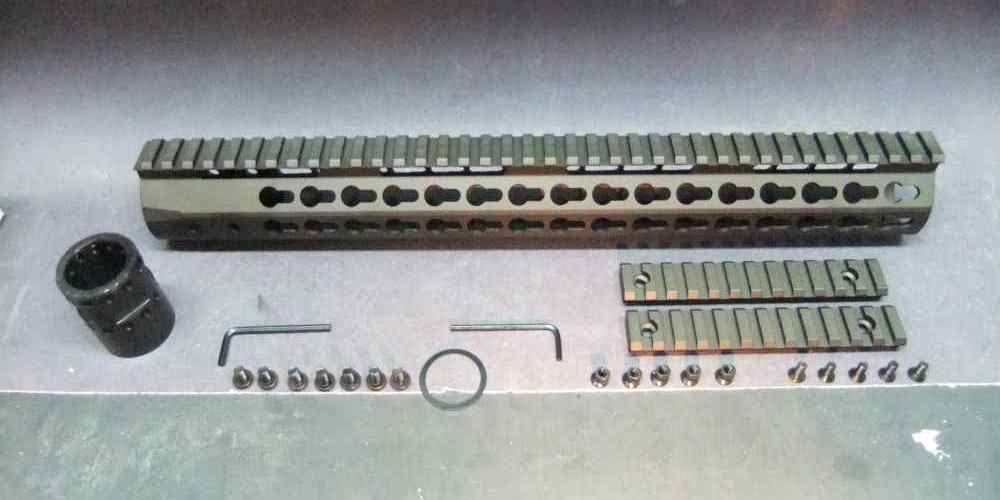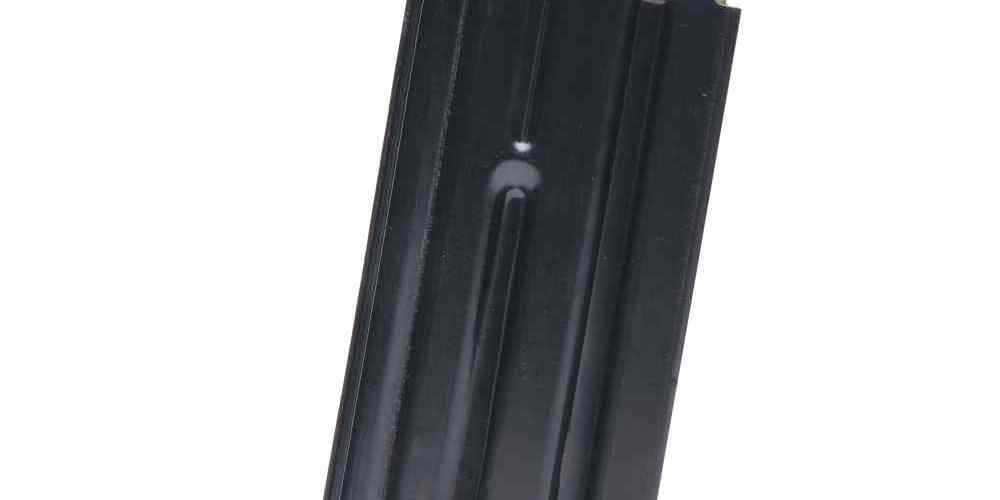“Reduce recoil, improve accuracy with AR15 recoil reduction services.”
Benefits of Upgrading Buffer and Spring Systems
If you’re a proud owner of an AR-15 rifle, you know that recoil can be a significant factor in your shooting experience. Recoil can affect your accuracy, control, and overall enjoyment of shooting your rifle. Fortunately, there are ways to reduce recoil and improve your shooting experience, one of which is by upgrading your buffer and spring systems. Upgrading your buffer and spring systems can provide a range of benefits, including reduced recoil, improved accuracy, and increased reliability. By replacing your factory buffer and spring with high-quality aftermarket options, you can fine-tune your rifle to better suit your shooting style and preferences. One of the primary benefits of upgrading your buffer and spring systems is reduced recoil. Recoil is the backward movement of a gun when it is fired, and it can be a significant factor in your shooting experience. By replacing your factory buffer and spring with a heavier buffer and stronger spring, you can reduce the amount of recoil your rifle produces. This can help you stay on target more easily, improve your accuracy, and make shooting more comfortable and enjoyable. In addition to reducing recoil, upgrading your buffer and spring systems can also improve your rifle’s accuracy. A heavier buffer and stronger spring can help reduce muzzle rise and keep your rifle more stable during firing. This can result in tighter shot groups and improved overall accuracy. By fine-tuning your buffer and spring systems to match your shooting style and preferences, you can optimize your rifle for maximum accuracy and performance. Another benefit of upgrading your buffer and spring systems is increased reliability. Factory buffers and springs can wear out over time, leading to malfunctions and decreased performance. By replacing them with high-quality aftermarket options, you can ensure that your rifle functions reliably and consistently. This can give you peace of mind knowing that your rifle will perform when you need it most, whether you’re at the range or in the field. When it comes to upgrading your buffer and spring systems, there are a variety of options to choose from. Buffer weights can range from lightweight to heavy, and springs can vary in strength and material. By experimenting with different combinations of buffers and springs, you can fine-tune your rifle to suit your shooting style and preferences. This customization can help you achieve the perfect balance of recoil reduction, accuracy, and reliability for your specific needs. In conclusion, upgrading your buffer and spring systems can provide a range of benefits for AR-15 owners. By reducing recoil, improving accuracy, and increasing reliability, upgrading your buffer and spring systems can enhance your shooting experience and help you get the most out of your rifle. With a variety of options to choose from, you can customize your rifle to suit your preferences and optimize its performance. So why wait? Upgrade your buffer and spring systems today and experience the benefits for yourself.
How to Properly Maintain Buffer and Spring Components
When it comes to maintaining your ar15 rifle, one of the key components to pay attention to is the buffer and spring system. This system plays a crucial role in reducing recoil and ensuring smooth cycling of the firearm. Over time, these components can wear out or become damaged, leading to decreased performance and potential malfunctions. In this article, we will discuss how to properly maintain and replace buffers and springs in your AR15 rifle. First and foremost, it is important to regularly inspect the buffer and spring components for any signs of wear or damage. This can include cracks, dents, or deformation in the buffer, as well as any stretching or compression in the spring. If you notice any of these issues, it is important to address them promptly to prevent further damage to your rifle. To properly maintain your buffer and spring components, it is recommended to clean them regularly with a solvent and a brush. This will help remove any dirt, debris, or fouling that may have accumulated over time. Additionally, you can apply a light coat of lubricant to the components to ensure smooth operation and prevent corrosion. If you find that your buffer or spring is damaged beyond repair, it may be necessary to replace them. When selecting replacement components, it is important to choose high-quality parts that are compatible with your specific AR15 model. This will help ensure proper fit and function, as well as longevity and reliability. To replace the buffer and spring components, you will need to disassemble your AR15 rifle according to the manufacturer’s instructions. This typically involves removing the stock, buffer tube, and buffer spring assembly. Once these components are removed, you can simply replace the old buffer and spring with the new ones, making sure to align them properly and secure them in place. After replacing the buffer and spring components, it is important to function test your AR15 rifle to ensure proper operation. This can be done by cycling the action several times and checking for any abnormalities or malfunctions. If everything appears to be in working order, you can reassemble your rifle and continue with your shooting activities. In conclusion, proper maintenance of buffer and spring components is essential for ensuring optimal performance and reliability of your AR15 rifle. By regularly inspecting, cleaning, and replacing these components as needed, you can help prevent malfunctions and prolong the life of your firearm. Remember to always use high-quality replacement parts and follow the manufacturer’s instructions for disassembly and reassembly. With proper care and attention, your AR15 rifle will continue to function flawlessly for years to come.
Comparing Different Buffer and Spring Options for Recoil Reduction
When it comes to reducing recoil in your AR15, one of the most effective ways to achieve this is by repairing or replacing your buffers and springs. These components play a crucial role in absorbing and dampening the recoil energy generated when firing your rifle. By choosing the right buffer and spring combination, you can significantly reduce felt recoil, improve accuracy, and enhance your overall shooting experience. There are several different buffer and spring options available on the market, each designed to cater to specific needs and preferences. Understanding the differences between these options can help you make an informed decision when it comes to upgrading your AR15 for recoil reduction. One of the most common buffer and spring combinations is the standard carbine buffer and spring. This setup is typically found in most AR15 rifles and provides a good balance of recoil reduction and reliability. However, if you are looking for more aggressive recoil reduction, you may want to consider upgrading to a heavier buffer and spring. Heavier buffers and springs are designed to absorb more recoil energy, resulting in a smoother shooting experience. These components are particularly beneficial for shooters who prefer shooting high-powered ammunition or who are looking to reduce felt recoil for improved accuracy. However, it is important to note that heavier buffers and springs may increase the overall weight of your rifle, which can impact handling and maneuverability. On the other hand, if you are looking to reduce the weight of your rifle while still maintaining effective recoil reduction, you may want to consider lightweight buffers and springs. These components are typically made from materials such as aluminum or titanium, which are lighter than traditional steel buffers and springs. While lightweight buffers and springs may not provide as much recoil reduction as their heavier counterparts, they can help to reduce the overall weight of your rifle for improved handling and comfort. Another factor to consider when choosing buffer and spring options for recoil reduction is the length of the buffer tube. The length of the buffer tube can impact the overall performance of your rifle, as it determines the amount of travel available for the buffer and spring to absorb recoil energy. A longer buffer tube allows for more travel, which can result in smoother recoil reduction and improved shooting comfort. In addition to buffer and spring options, there are also specialized recoil reduction systems available for AR15 rifles. These systems typically incorporate a combination of buffers, springs, and other components to provide maximum recoil reduction and shooting comfort. While these systems may come at a higher cost, they can offer significant benefits for shooters looking to maximize their rifle’s performance. Ultimately, the best buffer and spring combination for recoil reduction will depend on your individual preferences and shooting style. By understanding the differences between the various options available, you can make an informed decision when it comes to upgrading your AR15 for improved recoil reduction. Whether you choose a standard carbine buffer and spring, a heavier buffer and spring, or a specialized recoil reduction system, investing in quality components can help you achieve a smoother shooting experience and improved accuracy with your AR15.
Common Issues with Buffers and Springs in AR-15s
The AR-15 is a popular rifle known for its accuracy and reliability. However, like any mechanical device, it requires regular maintenance to ensure optimal performance. One common issue that AR-15 owners may encounter is recoil reduction problems caused by worn out or damaged buffers and springs. Buffers and springs play a crucial role in managing recoil in the AR-15. The buffer is a weight located inside the buffer tube that absorbs the impact of the bolt carrier group as it cycles back and forth during firing. The spring, on the other hand, provides the necessary tension to push the bolt carrier group forward into battery after each shot. Over time, buffers and springs can wear out due to the constant stress and pressure they endure during firing. This can lead to increased recoil, decreased accuracy, and even malfunctions such as failure to feed or eject properly. If you notice any of these issues with your AR-15, it may be time to inspect and possibly replace your buffers and springs. Inspecting your buffers and springs is a relatively simple process that can be done at home with basic tools. Start by removing the upper and lower receivers from your AR-15 and then remove the buffer and buffer spring from the buffer tube. Check for any signs of wear or damage, such as cracks, dents, or deformation. If you notice any of these issues, it’s time to replace your buffers and springs. When it comes to replacing buffers and springs in your AR-15, there are a few options to consider. You can choose to replace them with OEM parts from the manufacturer of your rifle, or you can opt for aftermarket upgrades that may offer improved performance and durability. Whichever option you choose, make sure to select buffers and springs that are compatible with your specific AR-15 model. Installing new buffers and springs in your AR-15 is a straightforward process that can be done at home with minimal tools. Start by inserting the buffer spring into the buffer tube, followed by the buffer itself. Make sure that the buffer is properly aligned and seated in the buffer tube before reassembling your rifle. Once everything is back together, cycle the bolt carrier group a few times to ensure that everything is functioning properly. After replacing your buffers and springs, it’s important to test fire your AR-15 to ensure that the recoil reduction issues have been resolved. Pay attention to how the rifle feels when firing and check for any signs of malfunctions. If you continue to experience recoil problems, it may be necessary to seek professional help to diagnose and address the issue. In conclusion, buffers and springs are essential components of the AR-15 that play a crucial role in managing recoil and ensuring optimal performance. If you notice any issues with recoil reduction in your AR-15, inspecting and possibly replacing your buffers and springs may be necessary. By following the steps outlined in this article, you can keep your AR-15 in top condition and enjoy reliable performance at the range or in the field.
Tips for DIY Repair and Replacement of Buffer and Spring Systems
If you own an AR-15 rifle, you know that recoil can be a significant factor in your shooting experience. Recoil can affect your accuracy, comfort, and overall enjoyment of shooting your rifle. One way to reduce recoil in your AR-15 is by properly maintaining and replacing the buffer and spring system. In this article, we will discuss the importance of these components, how to identify when they need to be replaced, and how to properly repair and replace them. The buffer and spring system in an AR-15 rifle is responsible for absorbing and dampening the recoil generated when the rifle is fired. The buffer is a weighted component that sits inside the buffer tube at the rear of the rifle. The spring is located behind the buffer and helps to absorb the recoil energy. Together, these components work to reduce the felt recoil and help to improve the overall shooting experience. Over time, the buffer and spring can wear out or become damaged, leading to a decrease in their effectiveness. Signs that your buffer and spring may need to be replaced include increased recoil, erratic cycling of the bolt, or visible damage to the components. If you notice any of these signs, it is important to inspect and potentially replace the buffer and spring to ensure your rifle continues to function properly. To repair or replace the buffer and spring in your AR-15, you will need a few basic tools and some knowledge of the rifle’s components. Start by removing the upper and lower receivers from the rifle and separating the buffer and spring from the buffer tube. Inspect the components for any signs of wear or damage, such as cracks, dents, or deformation. If you notice any damage, it is best to replace the buffer and spring with new components. When selecting a replacement buffer and spring, it is important to choose components that are compatible with your specific AR-15 model. There are different weights and lengths of buffers and springs available, so be sure to select the correct ones for your rifle. Additionally, consider upgrading to a high-quality buffer and spring set to improve the overall performance of your rifle. To install the new buffer and spring, simply reverse the process of removing the old components. Insert the new buffer into the buffer tube, followed by the spring. Ensure that the components are properly aligned and seated in the buffer tube before reassembling the upper and lower receivers. Once the rifle is reassembled, test fire it to ensure that the new buffer and spring are functioning properly. By properly maintaining and replacing the buffer and spring in your AR-15 rifle, you can reduce recoil and improve your shooting experience. Regularly inspecting these components for wear or damage and replacing them as needed will help to ensure that your rifle continues to function properly. With a little knowledge and some basic tools, you can easily repair and replace the buffer and spring system in your AR-15, allowing you to enjoy shooting your rifle for years to come.








